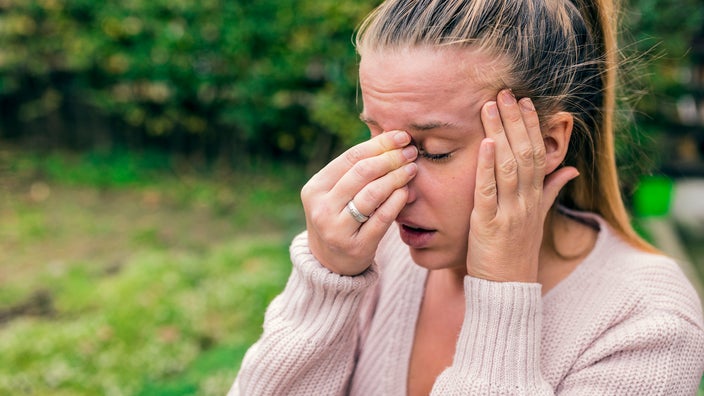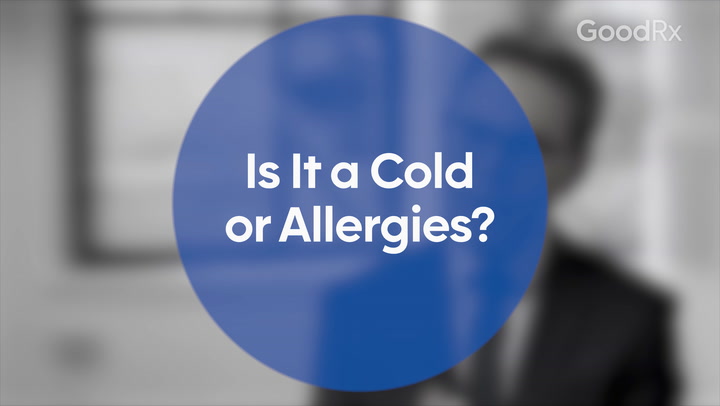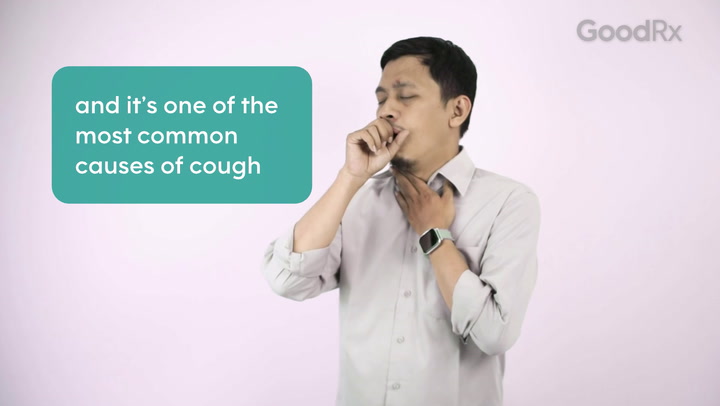
How to Relieve Sinus Pressure and Headache: 12 Medications and Home Remedies
Key takeaways:
Sinus pain, pressure, and headache can happen when swelling in the sinuses (called sinusitis) stop them from draining properly.
You can relieve sinus pain and congestion with home remedies (like steam and humidifiers) and over-the-counter medications (like decongestants).
Most people don’t need antibiotics to clear up sinus pain and pressure.
Access savings on related medications
Table of contents

Sinus pain is irritating and aggravating. An episode of sinus pain and pressure can take over your entire life, making it hard to work, sleep, and complete even basic tasks. Fortunately, there are many medications and over-the-counter (OTC) treatments that can help. Let’s take a closer look at what causes a sinus headache and remedies to relieve the pressure.
What causes sinus pressure?
Your sinuses are hollow spaces created by the bones in your face. You have sinuses above your eyes, below your eyes, and behind your eyes and nose.

These hollow spaces can fill with mucus when you’re congested because of colds, allergies, and irritation. If your sinuses get clogged and can’t drain, mucus gets trapped, and pressure builds up.

This can result in a sinus headache, pain, and pressure around the sinuses.
Conditions that can cause sinus pressure include:
Upper respiratory infection (like a cold or the flu)
Allergic rhinitis (seasonal allergies)
Search and compare options
How to relieve sinus pressure, pain, and headaches
About 1 in 8 adults in the U.S. experience sinus pain and pressure each year. So, it’s no surprise that many people want to know how to get sinus pain relief quickly. Medications and other home remedies can help you manage stuffy sinuses.
Here are 12 science-backed ways to get sinus pain relief fast.
1. Decongestants
There are many types of medications that can help relieve sinus pressure and pain. If you’re wondering what to take for sinus pressure, decongestants are a popular and effective medication class that can clear up sinus pain fast. Decongestants decrease the inflammation in the tissue around your sinuses. This lets mucus drain so you don’t feel pressure and pain inside your sinuses.
There are many types of decongestants, including oral medications and nasal sprays. Both types are available over the counter (OTC). Nasal sprays are a great option if you have nasal congestion as well as sinus pain.
Some popular decongestants include:
Oral decongestants: Pseudoephedrine (Sudafed)
Nasal steroid decongestants: Beclomethasone (Beconase AQ), fluticasone (Flonase), triamcinolone (Nasacort), mometasone (Nasonex), flunisolide
Nonsteroidal nasal decongestants: Oxymetazoline (Afrin)
Sinus infection vs. cold: Here’s how to know if your stuffy nose and headache is due to a sinus infection or a cold.
Rebound congestion: Read about how using nasal decongestant spray for too long can sometimes backfire.
How to feel better with a sinus infection: These foods and drinks provide nutrition to support your immune system.
Dosage
Nonsteroidal decongestants (like oxymetazoline) may cause rebound congestion. To avoid developing rebound congestion, follow directions on the packaging. Many decongestant manufacturers recommend not using the product for more than 3 to 5 days in a row.
Safety notes
These medications might not be safe for everyone. Talk with a healthcare professional before using decongestants if:
You’re pregnant.
You have a history of cardiovascular disease, high blood pressure, or glaucoma.
2. Antihistamines
If you have a history of seasonal allergies, you may get sinus pressure relief from antihistamines. Antihistamines are medications that block histamine, the chemical in your body that drives allergy symptoms.
When your body senses an allergen, it releases histamine into your system to try to get rid of the allergen. But histamine also causes nasal congestion. Blocking histamine stops congestion and lets mucus drain from your sinuses, relieving pain and pressure. Like decongestants, antihistamines come as oral pills and nasal sprays.
Popular OTC antihistamines include:
Oral antihistamines: Fexofenadine (Allegra), loratadine (Claritin), Zyrtec (cetirizine / pseudoephedrine), and levocetirizine (Xyzal)
Nasal antihistamines: Azelastine (Astepro, Astelin)
3. ClearUP
ClearUP is an OTC medical device approved by the FDA to treat sinus congestion. ClearUP is a handheld, pear-shaped device that uses electrical stimulation to clear congestion and treat sinus pain and pressure. Gliding the ClearUP device along your forehead above your eyes (brow), nose, and cheeks for up to 5 minutes per treatment may relieve sinus pain for up to 6 hours.
4. OTC pain relievers
OTC pain relievers can also help sinus pain by decreasing inflammation. Popular options include:
Acetaminophen (Tylenol)
Ibuprofen (Advil, Motrin)
As with all the options above, make sure to check with a healthcare professional to see if these are safe for you. If you’re pregnant, you shouldn’t take ibuprofen.
5. Breathe in steam
Breathing in hot, moist, air can relieve sinus pain and pressure. You can inhale moist air by sitting on the ledge of a bathtub with the shower running. You can also breathe in steam from a bowl of hot water. These techniques may be more helpful when combined with other home remedies to relieve a sinus headache.
6. Turn on a humidifier
Using a clean humidifier to moisten the air of your home may be helpful for sinus pain relief. Humidified air helps to keep mucous membranes moist and thin nasal secretions.
7. Nasal saline rinses
Saline nasal rinses can relieve your sinus pain without the use of medication. You can make your own saline rinse or buy premade rinses at your local pharmacy. Always use sterile water for saline rinses, not tap water. This will keep you safe from serious infections.
8. Elevate your head
Propping your head up at night can help you breathe more comfortably and decrease mucus buildup in your sinuses. This can relieve sinus pain and pressure.
9. Use a warm compress
Using a warm compress — like a towel soaked in warm water — can relieve sinus pressure. To relieve sinus pain and nasal congestion, try placing the warm compress over the painful areas of the nose, cheeks, or forehead.
10. Get some rest
Rest is important to help your body to recover from inflammation. Healthy adults should aim for between 7 and 9 hours of sleep per night. Teenagers, young children, and babies should get even more sleep. Improving your sleep hygiene allows your body to repair and restore itself.
11. Stay hydrated
Up to 60% of the body is made of water. Drinking enough water lets your body keep up with its usual activities, including fighting off whatever is causing your sinus congestion. It may help thin mucus, too.
12. Massage sinus pressure points
One small study showed that self-administered acupressure helped to relieve sinus pain. Try it at home by using your fingertip to apply gentle pressure to the Yintang pressure point for 3 to 5 minutes. This point is located on the forehead between the eyebrows.
How do you relieve sinus pain fast?
The quickest way to relieve sinus pain is to begin treatment as soon as symptoms start. You may need to use more than one method to relieve sinus pain. If you’re not sure which to try first, or if what you’re doing isn’t working, talk with a healthcare professional.
Most people don’t need antibiotics for sinus pain. But, if your symptoms are getting worse, it may be a sign that you’re developing an infection on top of your sinus congestion. A healthcare professional can help you figure out if you need to start antibiotics.
Can you get rid of a sinus headache instantly?
You probably can’t get rid of a sinus headache instantly. Though OTC medications and home remedies act quickly to reduce inflammation and sinus pain, they don’t work instantaneously.
Keep in mind that most treatments for sinus congestion provide temporary relief. So, you may have to repeat a medication dose or try another technique for relieving sinus pain after a couple of hours.
When should you see a healthcare professional for sinus pressure and pain?
Sinus pain and pressure can usually be managed at home. But, if your symptoms aren’t going away after a week or if you notice they’re getting worse, it’s time to see a healthcare professional.
You should also see a healthcare professional right away if you notice any of the following symptoms:
Fever
Headache
Neck pain
Dizziness
Loss or change of taste or smell
Facial swelling
Eyelid swelling
Eye pain or redness
Vision changes
Frequently asked questions
Sinus pressure can be felt almost anywhere on the face and head. Most commonly, pressure is felt in these places:
Behind the eyes
In the cheekbones
In the bridge of the nose
The forehead
Yes, sinus pressure can cause jaw pain. But there are many causes of jaw pain. If you’re having jaw pain that doesn’t go away, it’s important to see a healthcare professional to figure out the cause.
If you’re having sinus pain without congestion, talk with a healthcare professional. It’s possible to have sinus pain and even sinus headaches without congestion. But this isn’t as common. You want to make sure there isn’t another reason you’re experiencing sinus pain, like a new medical condition.
The bottom line
Sinus pressure and pain are common symptoms that can disrupt your daily life. You may be able to ease your sinus symptoms with home remedies and over-the-counter medications. The quickest way to relieve sinus pain is to start treatment right away. But, if your symptoms aren’t getting better after a few days or they’re getting worse, talk with a healthcare professional to make sure you aren’t developing an infection.
Why trust our experts?



References
American Academy of Allergy Asthma & Immunology. (2024). Saline sinus rinse recipe.
Goldsobel, A. B., et al. (2019). Prospective trial examining safety and efficacy of microcurrent stimulation for the treatment of sinus pain and congestion. Bioelectronic Medicine.
Israel, L., et al. (2021). Acupressure in patients with seasonal allergic rhinitis: A randomized controlled exploratory trial. Chinese Medicine.
Mark, A. M. (2019). Why does my jaw hurt? The Journal of the American Dental Association.
Penn Medicine. (2022). Sinus infections (sinusitis).
Rosenfeld, R. M., et al. (2015). Clinical practice guideline (update): Adult sinusitis. Otolaryngology–Head and Neck Surgery.
U.S. Food and Drug Administration. (2020). De Novo classification request for ClearUP Sinus Relief.
Water Science School. (2019). The water in you: Water and the human body. U.S. Geological Society.

























